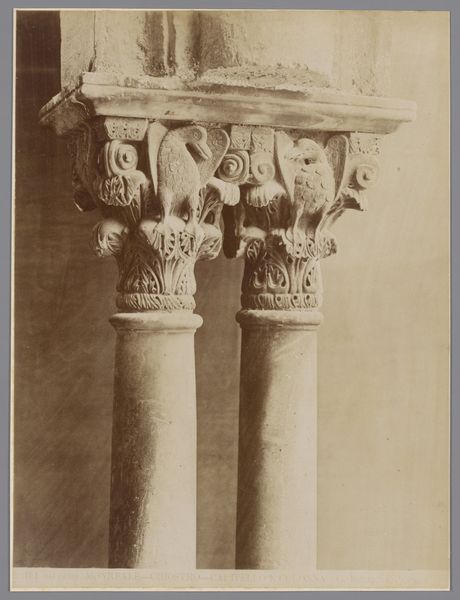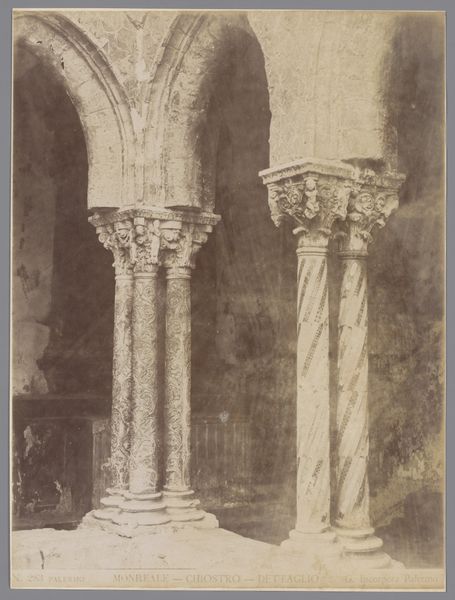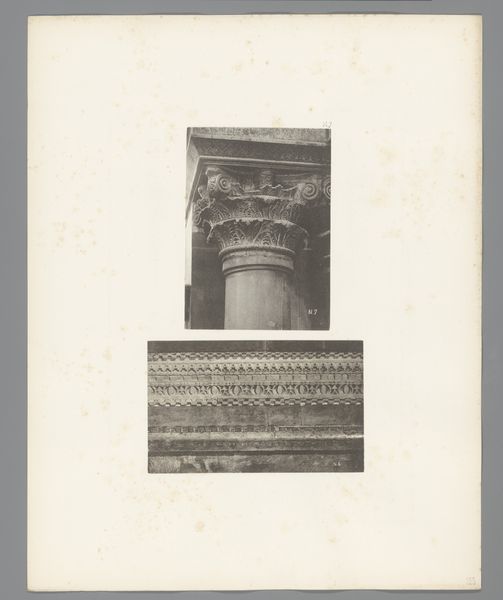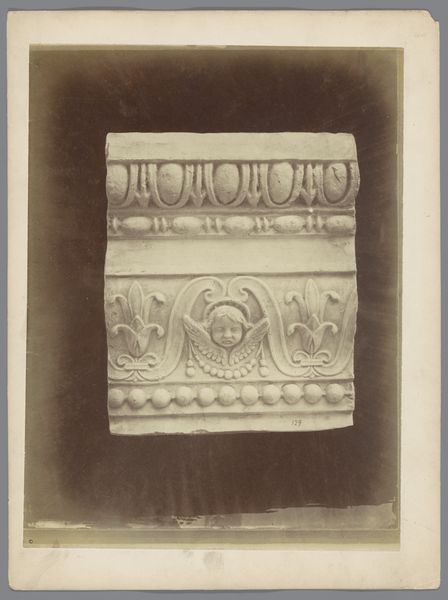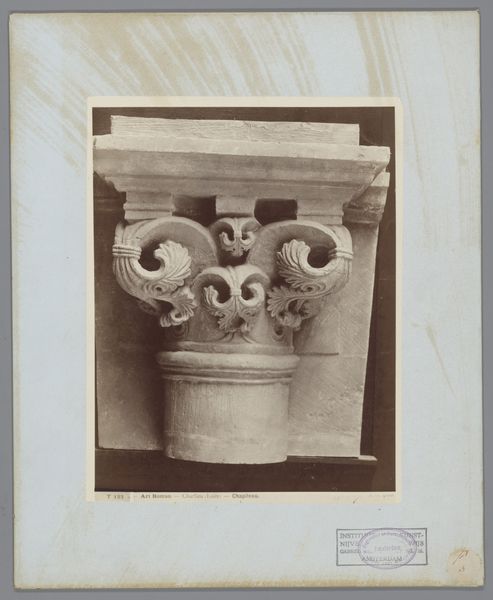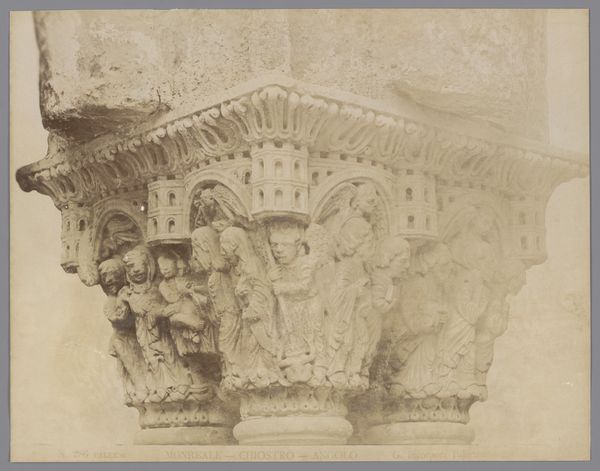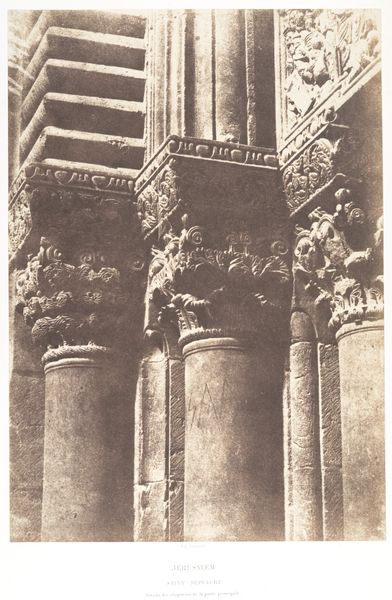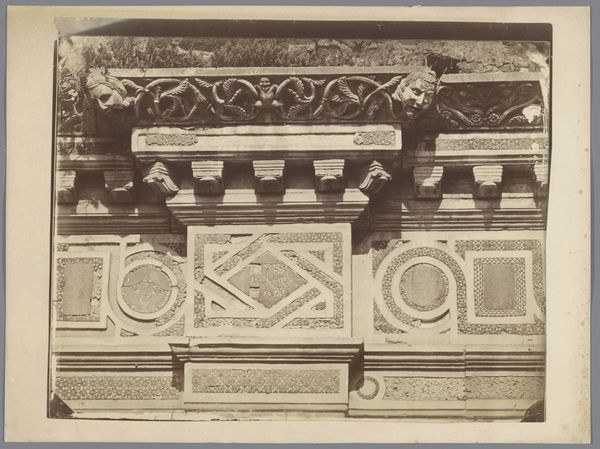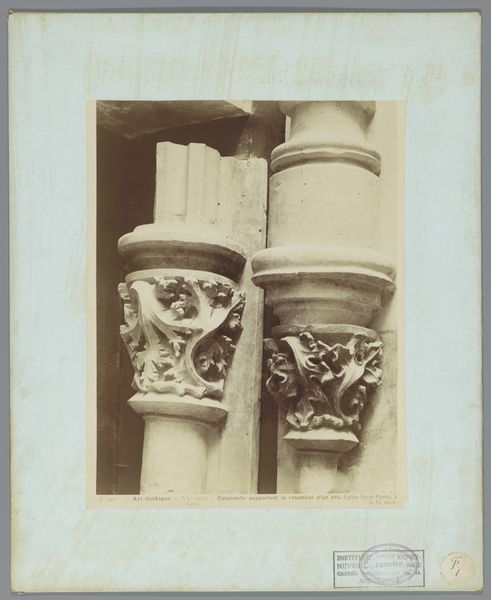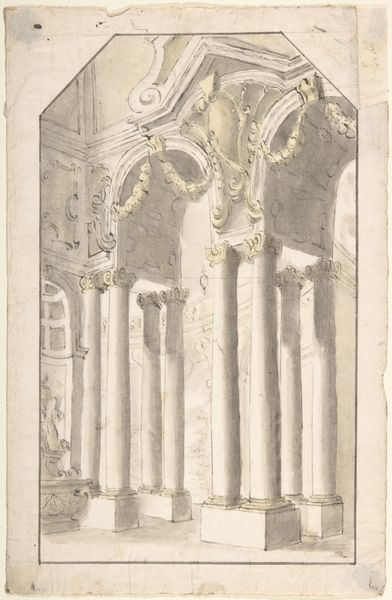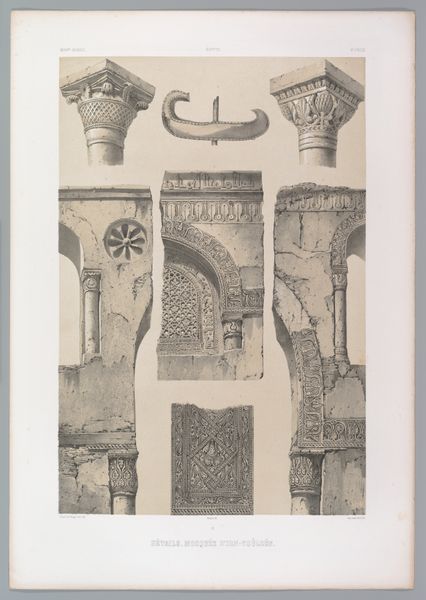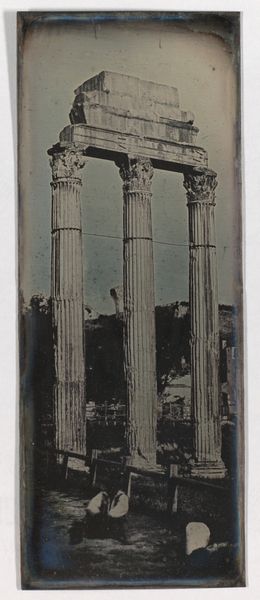
Detailopname van een kapiteel in de kloostergang van de dom van Monreale 1856 - 1914
0:00
0:00
carving, relief, photography, sculpture
#
carving
#
sculpture
#
relief
#
photography
#
romanesque
#
geometric
#
sculpture
Dimensions: height 253 mm, width 189 mm
Copyright: Rijks Museum: Open Domain
Curator: This sepia-toned photograph by Giuseppe Incorpora, taken between 1856 and 1914, presents a detailed view of a column capital in the Monreale Cathedral cloister. Editor: It exudes such stillness. The vertical thrust of the columns anchors the composition, while the detail-rich capital provides a point of visual complexity. It almost feels like a study in textures: smooth versus incredibly detailed. Curator: Exactly. The Monreale Cathedral, a site of Norman-Byzantine synthesis, represents a fascinating historical moment. Incorpora's image captures how such structures aimed to legitimize the Norman dynasty in Sicily, borrowing heavily from existing cultural forms. The placement of the capital itself visually articulates the wealth and ambition linked to religious patronage. Editor: The capitals almost narrate a silent story in the heart of its sculpted bands of relief. Look at how the scenes wrap, playing with depth and shadow – the artist so elegantly manipulates light with geometric motifs as they unfold. It lends to the building's palpable, material sense of order. Curator: Romanesque capitals, particularly in a royal religious context, had this explicit purpose. They functioned as visual allegories and moral instruction accessible to even an illiterate population. Notice how each element reinforces the narrative function of the structure? Editor: So each decorative element emphasizes visual harmony, making it legible, but it doesn't quite achieve an elegance: that rough hewn detail provides for an emotional directness with its simple narrative form and shape, which I admire. Curator: It's true, that lack of polish doesn’t make it visually less striking—perhaps all the more intriguing in its crude depiction, a reflection of a societal moment which sought visual accessibility rather than technical perfection. Incorpora's rendering reveals something profound about its function. Editor: Agreed. Seeing this intersection through Incorpora’s lens provides me an incredible clarity to the period it emerged from; he emphasizes these features beautifully, as well. Curator: And highlights the important social role monumental religious art plays. Editor: It does. It makes one ponder on this single object, all while pondering this very intersection of social power made concrete by human hands.
Comments
No comments
Be the first to comment and join the conversation on the ultimate creative platform.
